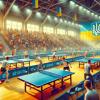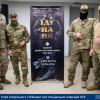Feed aggregator
The Future of Flexible Displays and Wearable Technology: A Technical Deep Dive
Flexible displays and wearable technology are rapidly transforming the consumer electronics industry, pushing the boundaries of what is possible in human-device interaction. Flexible displays enable devices to bend, fold, and stretch, while wearable technology integrates electronic components into materials that can be comfortably worn. These advancements are driven by materials science, miniaturization of components, and innovative manufacturing techniques. This article explores the latest breakthroughs, industry trends, technical challenges, and real-world applications of these cutting-edge technologies.
The Evolution of Flexible Displays1.1. Core Technologies Behind Flexible Displays
Flexible displays leverage new materials and fabrication techniques to achieve durability and functionality. The primary display technologies used are:
- Organic Light-Emitting Diodes (OLEDs): OLEDs use organic compounds that emit light when an electric current is applied. Their thin and flexible nature makes them ideal for foldable and rollable screens. OLEDs also offer superior color accuracy, contrast ratios, and power efficiency compared to traditional LCDs, making them a preferred choice for mobile and wearable devices.
- MicroLEDs: MicroLEDs offer higher brightness, energy efficiency, and longevity, making them an attractive alternative to OLEDs for flexible display applications in smartwatches, augmented reality (AR) devices, and automotive dashboards. Unlike OLEDs, microLEDs do not suffer from burn-in issues, providing longer-lasting performance in demanding environments.
- E-Paper Displays: Although traditionally rigid, e-paper technology is evolving to include flexible variants that allow for bendable e-readers and dynamic signage. E-paper displays consume significantly less power than OLEDs and microLEDs, making them ideal for applications where energy efficiency is paramount, such as electronic shelf labels and wearable medical devices.
1.2. Breakthroughs in Flexible Display Materials
Recent material innovations have significantly enhanced the flexibility and durability of displays.
- Graphene-Based Substrates: Graphene, a single layer of carbon atoms arranged in a hexagonal lattice, exhibits exceptional electrical conductivity, mechanical flexibility, and lightweight properties. These characteristics make graphene an excellent candidate for next-generation flexible displays, providing both durability and energy efficiency.
- Ultra-Thin Glass (UTG): Companies like Samsung and Corning have developed ultra-thin, chemically treated glass that bends without breaking. This innovation is crucial for foldable smartphones and tablets, as it offers superior scratch resistance and optical clarity compared to polymer-based alternatives.
- Polyimide Films: Polyimide is a high-performance polymer that serves as a flexible and durable substrate for OLED and e-paper screens. It offers excellent thermal stability and mechanical strength, making it an essential component in the development of bendable and stretchable displays.
2.1. Roll-to-Roll (R2R) Printing
Roll-to-roll (R2R) manufacturing is a continuous production process that enables the fabrication of thin, flexible electronics on a large scale. By printing electronic circuits and display components onto flexible substrates, R2R technology significantly reduces production costs and increases manufacturing efficiency. This technique is essential for the commercialization of affordable flexible displays in consumer electronics, medical devices, and wearable technology.
2.2. Laser Patterning and Etching
Laser patterning and etching techniques enhance the precision of flexible circuit production, allowing for high-resolution displays in compact form factors. By selectively removing material layers with laser beams, manufacturers can create intricate circuit patterns that improve the performance and durability of flexible displays. These techniques also enable the development of micro-LED and quantum-dot displays with enhanced color accuracy and brightness.
Wearable Technology: The Integration of Flexible DisplaysWearable technology has benefited immensely from flexible display advancements, enabling next-generation applications in fitness tracking, healthcare, and immersive computing.
3.1. Smartwatches and Fitness Bands
Smartwatches like the Samsung Galaxy Watch and Apple Watch utilize OLED and microLED technology to deliver high-resolution displays in a compact, power-efficient form. The use of flexible displays enhances durability and adaptability, allowing for sleeker designs and better user experiences. Additionally, fitness bands equipped with flexible screens provide real-time health metrics, including heart rate, oxygen saturation, and stress levels, making them indispensable tools for health-conscious consumers.
3.2. Smart Glasses and Augmented Reality (AR) Devices
Smart glasses and AR devices rely on flexible OLED micro-displays to provide immersive digital experiences without compromising portability and battery life. Products like Microsoft HoloLens and Meta’s AR glasses integrate ultra-thin, lightweight flexible displays that enhance usability and comfort. These wearables are expected to play a pivotal role in industries such as healthcare, education, and remote collaboration, where real-time data visualization and hands-free interaction are essential.
3.3. E-Textiles and Smart Clothing
The integration of flexible circuits into textiles has given rise to e-textiles, which are fabrics embedded with electronic components. These smart fabrics can monitor vital signs, track movement, and even display real-time information on fabric surfaces. Applications of e-textiles range from sportswear with embedded biometric sensors to military uniforms equipped with heads-up displays (HUDs) for enhanced situational awareness.
Industry Trends and Market Adoption4.1. Consumer Electronics Giants Leading the Charge
Leading technology companies are investing heavily in flexible display innovation:
- Samsung: The Galaxy Z Fold and Z Flip series demonstrate the commercial viability of foldable displays, offering a glimpse into the future of mobile computing.
- LG: LG’s rollable OLED displays are finding applications in televisions, automotive dashboards, and commercial signage, showcasing the versatility of flexible display technology.
- Apple: Rumors suggest that Apple is developing foldable iPhones and wearable microLED screens, indicating a strong commitment to flexible display research and development.
4.2. Adoption in Healthcare and Medical Wearables
Flexible sensors and displays are revolutionizing medical monitoring by enabling real-time health tracking and diagnostics. Wearable medical devices equipped with flexible displays offer several advantages:
- Continuous ECG and glucose monitoring for patients with chronic conditions.
- AI-powered diagnostics integrated into smart bands for early disease detection.
- Skin patches embedded with stretchable biosensors for non-invasive health assessments.
5.1. Durability and Longevity
Repeated bending and folding can lead to material fatigue, impacting the longevity of flexible displays. Researchers are exploring self-healing materials and reinforced ultra-thin glass layers to enhance durability.
5.2. Power Efficiency and Thermal Management
Flexible electronics require optimized power consumption strategies to maintain battery life. Advances in energy-efficient microprocessors and flexible lithium-ion batteries are crucial for sustaining long-term usability.
5.3. Cost and Scalability
Despite technological advancements, mass production of flexible displays remains costly due to specialized fabrication processes. Industry efforts are focused on streamlining production and improving yield rates to make flexible technology more accessible.
The Future of Flexible Displays and Wearable Tech6.1. Integration with AI and IoT
Future wearables will incorporate AI-driven health monitoring, context-aware displays, and seamless IoT connectivity, enhancing user experiences across various domains.
6.2. Advances in Quantum Dot and Perovskite Materials
Quantum dot and perovskite-based displays could revolutionize flexible screens by improving color accuracy, efficiency, and lifespan.
6.3. Fully Stretchable and Shape-Adaptive Devices
The next frontier is fully stretchable electronics that dynamically adapt to user needs, with applications in robotics, prosthetics, and adaptive interfaces.
ConclusionFlexible displays and wearable technology are set to redefine digital interaction, merging advancements in materials science, electronics, and AI. As manufacturing processes evolve, these devices will become more durable, power-efficient, and accessible, shaping the future of consumer electronics, healthcare, and beyond.
The post The Future of Flexible Displays and Wearable Technology: A Technical Deep Dive appeared first on ELE Times.
Top 10 Smart Switch Startups in India
The Indian smart home market is experiencing rapid growth, with smart switches playing a pivotal role in home automation. These devices allow users to control lighting, appliances, and other electrical fixtures remotely, enhancing convenience and energy efficiency. Several Indian startups have emerged as key players in this domain, offering innovative smart switch solutions tailored to the unique needs of Indian consumers. Here are ten notable smart switch startups in India:
- Wipro Smart Home
A subsidiary of Wipro Limited, Wipro Smart Home specializes in integrated smart lighting systems, security solutions, and energy management devices. Their smart switches enable users to control home lighting remotely, schedule operations, and monitor energy consumption, all through a user-friendly mobile application. The seamless integration with other smart devices makes Wipro a prominent player in the Indian smart switch market.
- Syska
Syska is renowned for its smart lighting solutions, including smart bulbs and switches. Their smart switches are designed for easy installation and compatibility with voice assistants like Amazon Alexa and Google Assistant. Features such as remote operation, scheduling, and energy monitoring cater to the evolving needs of tech-savvy consumers.
- Oakter
Oakter offers modular smart home kits, including smart plugs and switches, that can be controlled via smartphones or voice commands. Their smart switches are designed for retrofit installations, allowing users to upgrade existing setups without extensive rewiring. The focus on affordability and user-friendly interfaces has made Oakter a popular choice among Indian homeowners.
- Cubical Labs
Cubical Labs provides automation systems for lighting, security, and energy management. Their smart switches offer features like touch-sensitive controls, remote access, and integration with other smart devices. The emphasis on scalability and customization allows users to tailor their smart home experience according to individual preferences.
- Atomberg Technologies
While primarily known for smart ceiling fans, Atomberg Technologies has ventured into smart switches that complement their energy-efficient appliances. These switches offer remote control, scheduling, and energy monitoring, aligning with the company’s commitment to sustainability and innovation.
- Silvan Innovation Labs
Silvan specializes in integrated home automation systems, including smart switches that control lighting, security, and entertainment devices. Their products feature AI-powered systems and voice recognition, providing a seamless and intuitive user experience. The focus on high-end residences and luxury hotels showcases their expertise in creating sophisticated smart home ecosystems.
- TagHaus
TagHaus offers a range of smart home devices, including smart plugs and switches, that prioritize simplicity and affordability. Their smart switches are designed for plug-and-play installation, making it easy for users to upgrade their homes without professional assistance. Features like cloud connectivity and mobile app control enhance the convenience and appeal of their products.
- Inoho
Inoho provides retrofit smart home solutions, including smart switches that allow users to control appliances remotely. Their modular design and affordability make it accessible for homeowners looking to upgrade their existing electrical systems without significant modifications.
- Leccy & Genesis
Leccy & Genesis focuses on centralized control systems, offering smart switchboards that manage various appliances simultaneously. Their products are designed to be dependable and user-friendly, providing homeowners with the ability to control lighting, fans, and other devices through a centralized interface.
- Jasmine Smart Homes
Jasmine Smart Homes offers Wi-Fi-enabled smart switches designed specifically for Indian homes. Their products feature innovative designs, easy installation, and compatibility with popular voice assistants. The focus on combining functionality, style, and reliability has made them a trusted name in the Indian smart home market.
These startups are at the forefront of India’s smart switch industry, offering a diverse range of products that cater to various consumer needs. From energy efficiency to seamless integration with existing home systems, these companies are driving the adoption of smart home technologies across the country.
The post Top 10 Smart Switch Startups in India appeared first on ELE Times.
🏓 Турнір з настільного тенісу серед студентів!
📢 Момент слави для поціновувачів настільного тенісу! Хапай свою улюблену ракетку (так, навіть ту, що пережила всі сесії) та приходь довести, що ти – справжній майстер пінг-понгу!
Гуманітарне розмінування: гуртуємося задля успіху
Сфера гуманітарного розмінування є для нашої держави надзвичайно важливою. Роботи з очищення величезних територій від мін і всякого вибухонебезпечного непотрібу, що проводяться вже тепер, а після завершення війни мають досягнути велетенських масштабів, потребують, по-перше, кадрового забезпечення, по-друге, – значної кількості спеціального обладнання, і, по-третє, – постійного удосконалення технологій розмінування та їхнього впровадження у життя. І всі ці "по-перше", "по-друге" і "по-третє" віднедавна безпосередньо стосуються КПІ ім. Ігоря Сікорського.
I put together another free form Nixie Tube Clock
 | So, I tried to free form a similar clock I free formed earlier this year, except it includes the hours, minutes, and seconds. I wanted to see if I could possibly improve my free forming builds compared with the first clock I built, but honestly, it still came out ugly to me. At any rate, I kinda like the scraggly look of Freeform/dead bug electronics assembly. I’ll never be as good as Mohit Bhoite, Eirik Brandal, etc. However, I noticed that building stuff like this is calming to me. It’s difficult and stressful, although I find that when my job is pissing me off, I spent 15 minutes working on this clock to calm me down. The awesome part was after I assembled everything onto the base, I decided to just power it up and see if it worked. At first, I set my power supply to 12v and limited the current to 100mA. It powered up and hit the 100mA limit. I slowly increased the current, and when I hit 250mA, all the nixies counted down from 9 to 0, then counted up from 0 to 9, and displayed the time. Sort of. I had to ‘reset’ the DS1302 RTC, installed the button cell battery, and cycled the power…and it just worked. I set the time, and there it was, a working nixie Freeform clock! At first I was excited, then thought, “but now I have nothing to troubleshoot…” Where do I go from here? I don’t know; I may be seriously thinking about free forming Keith Bayern’s design, a discreet component nixie clock. That kit contains over 1,000 components, but it might be doable and pretty impressive lol [link] [comments] |
How to reinvent analog design in the age of AI

Where does analog design stand in the rapidly growing artificial intelligence (AI) world? While neuromorphic designs have been around since the 1980s, can they reinvent themselves with building blocks like field-programmable analog arrays (FPAAs)? Are there appropriate design tools for analog to make a foray into the AI space? Georgia Tech’s Dr. Jennifer Hasler, known for her work on FPAAs, joins other engineering experts to discuss ways of accelerating analog design in the age of AI.
Read the full transcript of this discussion or listen to the podcast at EDN’s sister publication, EE Times.
Related Content
- Inside the walls of FPAA maker Anadigm
- Field Programmable Analog and Gallium Arsenide
- Field Programmable Analog Arrays Get Larger and Cost Less
- Field-Programmable Qubit Arrays: The Quantum Analog of FPGAs
- Lowered Price for Field Programmable Analog Array (FPAA) Development Kit
The post How to reinvent analog design in the age of AI appeared first on EDN.
My first serious PCB, Digital Oscilloscope
 | submitted by /u/_RoseDagger [link] [comments] |
vtr of doom and despair
 | submitted by /u/Haunting_Ad731 [link] [comments] |
Weekly discussion, complaint, and rant thread
Open to anything, including discussions, complaints, and rants.
Sub rules do not apply, so don't bother reporting incivility, off-topic, or spam.
Reddit-wide rules do apply.
To see the newest posts, sort the comments by "new" (instead of "best" or "top").
[link] [comments]
Deep Brain Stimulation pacemaker on xray.
 | submitted by /u/nixxon94 [link] [comments] |
Зустріч з бійцями Сил спеціальних операцій ЗСУ
КПІшники зустрілися з бійцями Сил спеціальних операцій ЗСУ — військовими, які успішно виконуюють надскладні бойові операції на фронті й в тилу ворога.
This video provides an interesting lesson on how traffic lights are made using logic circuits.
 | submitted by /u/rodrigtti [link] [comments] |
DsPIC33CK adapter board I created in kicad to use this multi phase board.
 | Need to try still if it works [link] [comments] |
John Bardeen (left), Walter Brattain (right), inventors of the BJT. William Shockley (seated) took undeserved credit. All 3 shared the 1956 Nobel Prize in Physics.
 | submitted by /u/1Davide [link] [comments] |
Auction of CrayoNano’s assets extended to 17 March
Енерго-Інноваційний Хаб КПІ: рік досягнень та нових можливостей
Центр декарбонізації енергетики та Енерго-Інноваційний Хаб КПІ ім. Ігоря Сікорського в його складі активно розвиваються, впроваджуючи інноваційні рішення та укріплюючи партнерські зв’язки. За трохи більше ніж рік від створення Хаб уже досягнув низки стратегічних успіхів.
The downside of overdesign, Part 2: A Dunn history

Editor’s Note: This is a two-part series. Part 1 can be found here.
My father, John Edward Dunn, was a Foreman in the New York City Department of Bridges. His shop was in Brooklyn on Kent Avenue adjacent to the Brooklyn Navy Yard. His first assistant at that shop was a man named Connie Rank. Dad’s responsibilities were to oversee the maintenance and repairs of all of the smaller bridges in Brooklyn, Staten Island, and parts of Queens. The Mill Basin Bridge was one of his.
Dad was on call 24/7 in response to any bridge emergencies. At any time of day or night a phone call would come in and he would have to respond. When calls came in at 2 AM or 3 AM or whenever, the whole household would be awakened. Dad would answer the call and I would hear “Yeah. Okay, I’m on my way.” Then I’d hear Dad dialing a call where I’d hear “Connie? Yeah. See you there,” and that would be that. The routine was that familiar. Nothing further needed to be said. He wouldn’t get home again until at least 5:30 PM the following day for having responded to whatever emergency had occurred and then having worked a full day afterward without interruption.
Many of those emergencies were at the Mill Basin Bridge. One of them made the front page of a city newspaper. There was a full page photo of the bridge taken from ground level showing all kinds of emergency vehicles on the scene with all of their lights gleaming against the dark sky. Dad showed me that paper and asked “Do you see that little dot here?” I said “Yes,” and he said, “That little dot is me.” He knew where he had been standing.
Following one accident, perhaps it was the accident above, Dad apparently saved someone’s life. He was honored for that by Mayor Robert F. Wagner. Neither I at the age of twelve nor my sister at nine were ever told the details of the event, but it led to Dad shaking hands with the Mayor at New York City Hall.

John Dunn’s late father, John Edward Dunn, shaking hands with NYC mayor Robert F. Wagner circa 1956 to receive an award for his brave work saving a life as a foreman with the NYC Department of Bridges.
John Dunn is an electronics consultant, and a graduate of The Polytechnic Institute of Brooklyn (BSEE) and of New York University (MSEE).
Related Content
- The downside of overdesign
- Loud noise makers and worker safety
- RF power amplifier safety
- Fractured wires and automotive safety
- The headlights and turn signal design blunder
The post The downside of overdesign, Part 2: A Dunn history appeared first on EDN.







